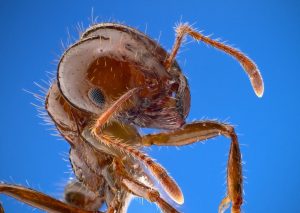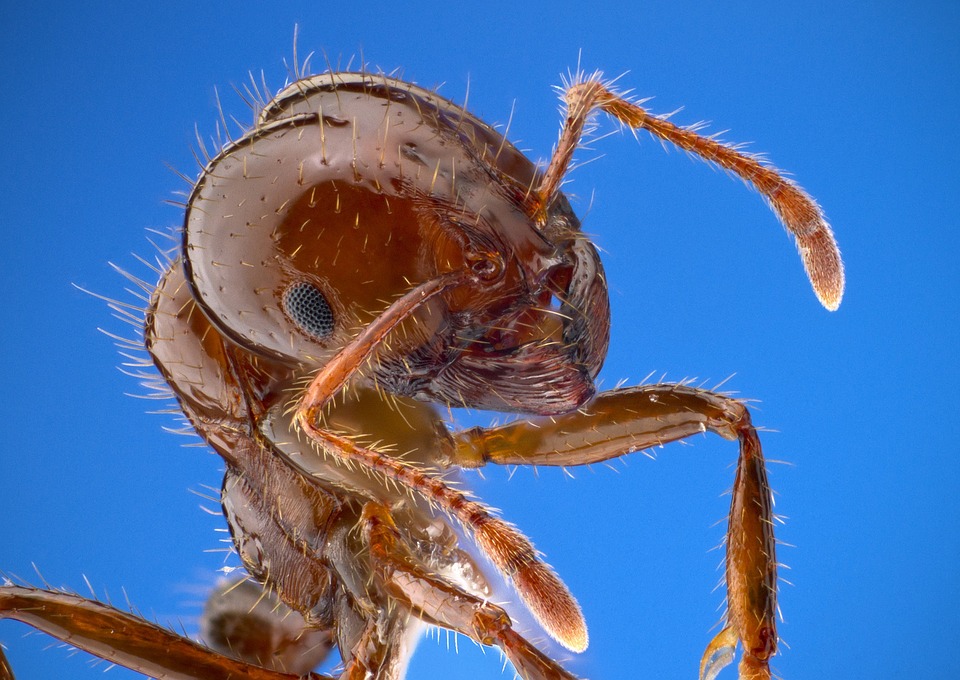
Fire ants must die.
Not only do these invasive pests cause painful bites to adults and kids, they kill crops, destroy equipment and swarm and kill calves, foals and chicks, costing farmers and ranchers millions of dollars each year.
If you have a small farm and depend on just a few cattle or birds, fire ants can wipe you out. If you don’t have fire ants, you soon will. These South American pests are quickly spreading across the United States, with voracious appetites, venomous bites and a nasty habit of chewing through electrical insulation.
Yes, fire ants must die. All of them.
Thankfully, our friends at Texas A&M University’s AgriLife Extension have developed this two-step program to deal with those swarming pests.
—
Have you two-stepped with fire ants lately?
And we don’t mean an ants-in-your-pants dance. We mean the currently best proven approach to effectively manage fire ants, called the Two-Step Method. This approach works best in fully infested areas (five or more mounds for each quarter-acre of yard) or where there is little or no concern for preserving native ant species.
Two-stepping includes broadcasting a bait insecticide over your entire yard sometime between late August and mid-October, and then treating individual, problem mounds with an approved mound drench, granule, bait, or dust insecticide.
Step One: Baits
Fire ant baits consist of pesticides on processed corn grits coated with soybean oil. Worker ants take the bait back to the colony, where it is shared with the queen, which then either dies or becomes infertile. Baits currently available include Amdro, Siege, Logic, Award, Ascend, or Raid Fire Ant Killer. Baits are slow-acting and require weeks to months to achieve 80% to 90% control. Bait products can be used to easily treat large areas effectively. They contain extremely low amounts of toxins. For best results:
- Use fresh bait, preferably from an unopened container.
- Apply when the ground and grass are dry and no rain is expected for the next 24 to 48 hours.
- Apply when worker ants are actively looking for food, usually in late afternoon or in the evening. To test, put a small pile of bait next to a mound and see if the ants have found it within 30 minutes.
- Apply baits with hand-held seed spreaders. Don’t apply baits mixed with fertilizer or seed.
- Baits can be applied anytime during the warm season. When applied in late summer/early fall, ants are still foraging and it’s easier to predict weather patterns. Then the bait can take effect over the winter while you’re indoors. Re-apply baits once or twice a year. (see Tackle Fire Ants in the Fall).
Step Two: Individual Mound Treatments
Chemical. With dust products, no water is needed and they act fast. However, they leave a surface residue. Liquid drenches generally eliminate mounds within a few hours and leave little surface residue after application. Granular products are relatively fast acting and usually require putting granules on and around the mound and then sprinkling 1 to 2 gallons of water on without disturbing the mound. Closely follow directions on the label.
Organic. Pouring 2 to 3 gallons of very hot or boiling water on the mound will kill ants about 60% of the time. Otherwise, the ants will probably just move to another location. Very hot or boiling water will kill the grass or surrounding vegetation that it is poured upon. Other natural or organic methods include mound drench products containing plant derived ingredients (e.g. botanical insecticides) and biological control agents.
Originally published at the Texas Imported Fire Ant Research and Management Project.
